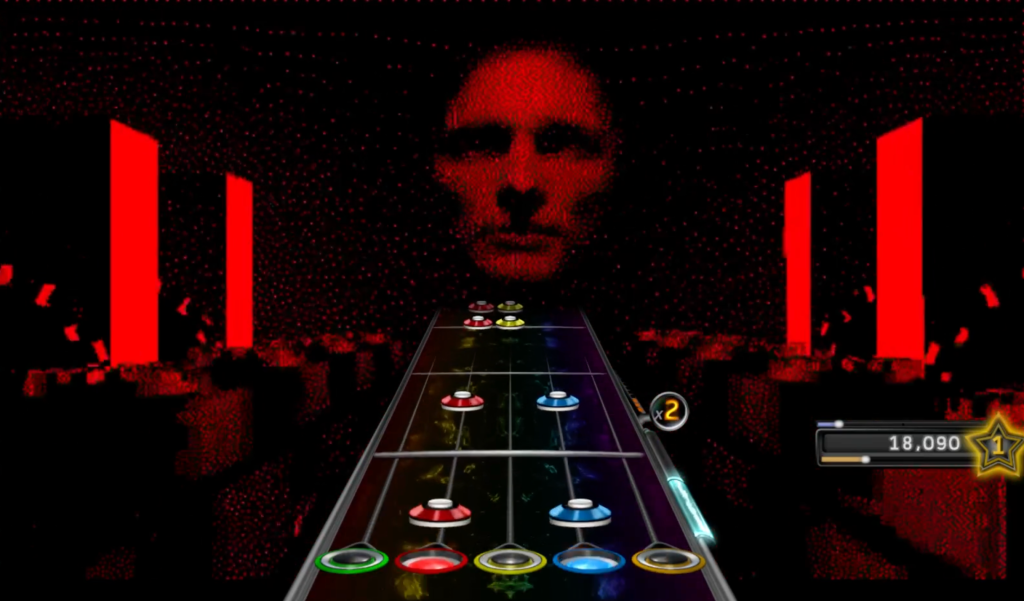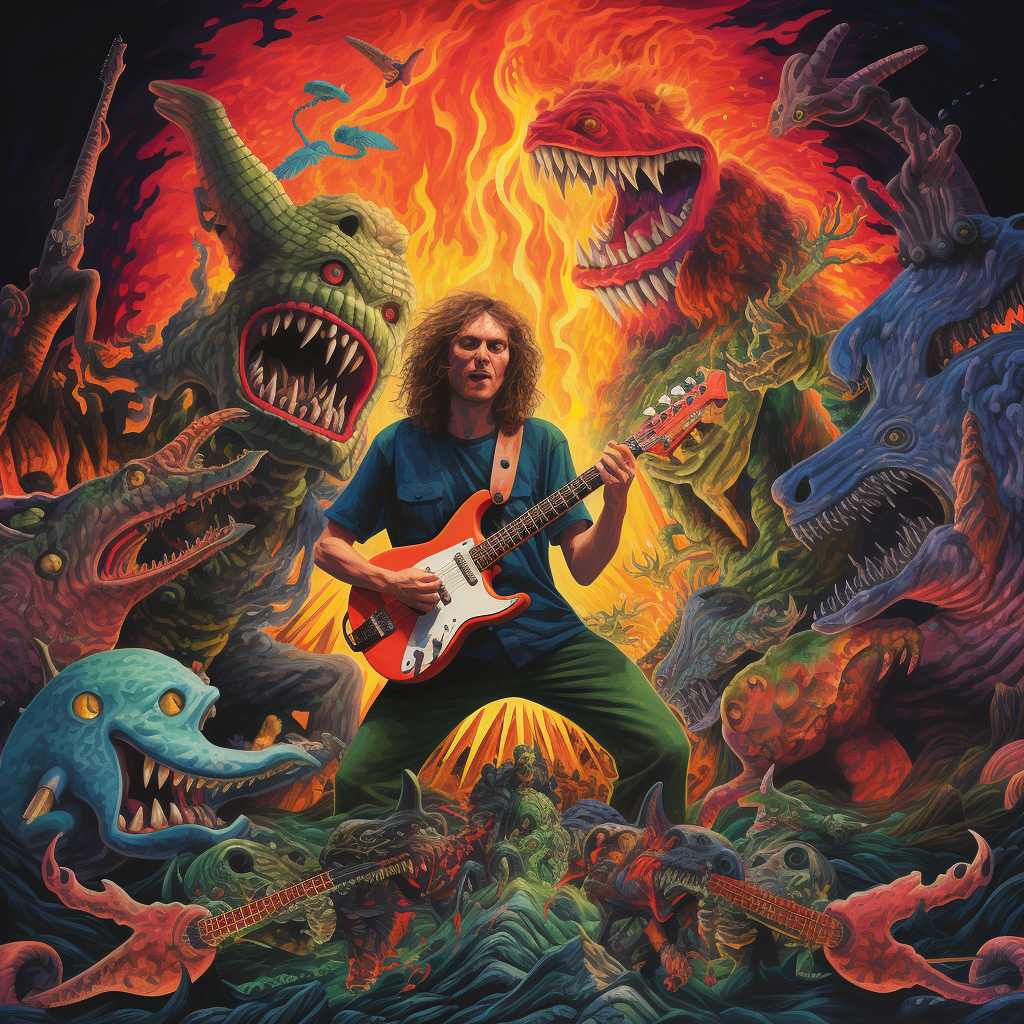Cover image created in Midjourney using prompt: king gizzard and the lizard wizard
When asked to think about participatory elements of my game media text, me having multiple, my mind was immediately drawn to Clone Hero. This game text is fundamentally built upon participatory elements including but not limited to connectivity, multimediality, interpretation and reconfiguration.
The major and arguably most important branch of Clone Hero is its connectivity elements. Players have charted songs from existing Guitar Hero and Rock Band games for the players to use, as well as a never-ending library of custom song charts being shared. Here is where we start to see a decentralised community flourish to massive potential and beyond, exchanging knowledge, ideas and game elements (in this case, charts) (Raessens 2005). Without players connecting with each other, charting and sharing requests, Clone Hero would merely be skeletal framework of lost potential, but thanks to community backing, for nearly six years, the game has continued to expand and grow in development and diversify its library exponentially, something that would not be possible without it’s fanbase.
In order for players to gain the most of their playing experience, allowances are made in-game for custom backgrounds. These can be a standard image or video across all songs played, or even having different backgrounds for different songs. For example, I even applied the music video for ‘Robot Stop’ by King Gizzard and the Lizard Wizard for only when I play said song.

This kind of multimediality allowing players to customise their experience, ensures that no one playthrough is the same, and is tailored to the players music tastes, interests and comfortability.
Interpretation of Clone Hero is likely strewed through a collaborative and nostalgic lens by many. This is supported by the encoding and decoding of the game (Hall 1980). Clone Hero started as a passion project of the sort, throughout its series of Alpha and Beta releases, the goal was to make the experience as similar to the originators as possible with its own distinct features. The reception of the game was accessible and enjoyed by vast corners of the still-growing community. With burdens of song charting and customisation being split amongst players with shared values towards the game, allowed for the revitalisation of the genre with a new community-minded interpretation.
References:
Hall, S 1980, ‘Encoding/decoding’, Culture, media, language : working papers in cultural studies, 1972-79, Hutchinson, London, pp. 117-127.
Raessens, J and Goldstein, J 2005, Computer games as participatory media culture. Handbook of computer game studies, pp.373-388.


Leave a comment